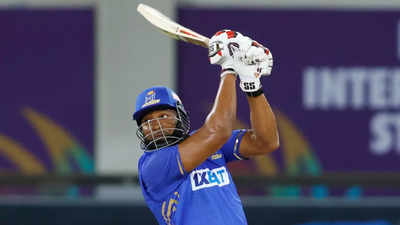The plethora of T20 stars that the International League T20 (ILT20) attracts ensures cricket is of a high standard. With the league offering the biggest payday outside of the Indian Premier League (IPL), it is an attractive proposition for players over the world.
Here, we take a look back at the inaugural edition in 2023, with three players in particular focus because their performances might have not got the credit they deserve.
Their bare numbers look good. But when seen in context, they are even better.
1. Wanindu Hasaranga

Sri Lankan spinner Wanindu Hasaranga played nine games in the ILT20 2023 for Desert Vipers. He batted only five times, and took 15 wickets in his team’s run to the final, bowling his full quota of overs in most games. While batting, he scored 115 runs at a good strike rate of 145.57. His economy rate while bowling was 7.2, which potrays fairly handy figures, but perhaps not immediately eye-grabbing.
Once you dive deeper though, Hasaranga’s value becomes apparent. For instance, of the 15 wickets he took, 14 were of batters in the top seven. The only one outside the top seven was when he snared Sunil Narine who was at No.8 – hardly a cheap wicket. Hasaranga’s strikes gave the Vipers decisive control when they were bowling, because he stopped good batters in their tracks. The difference between getting batters before they tee off versus getting them in the death overs is large.
Hasaranga’s batting wasn’t as impactful throughout the tournament, but he saved his best for the final, smashing 55 from 27 balls to lift a floundering score to 146 for 8. The Vipers eventually didn’t have enough to stop Gulf Giants from winning, but Hasaranga took 1 for 28 in his full quota of overs too, making the Giants really sweat for their win. Hasaranga’s team may have lost, but there was no player who came close to matching him for all-round impact, and he was the clear Man of the Tournament.
2. Kieron Pollard

Among batters, Kieron Pollard was third on the run charts with 394 runs, but those came at a blistering strike rate of 192.2. Alex Hales (469) and James Vince (439) got more runs than Pollard, but they opened the batting and had more time to build bigger innings while Pollard batted almost exclusively at No.5. Plus, they did it at much lower speeds.
Pollard batted nine times, and the
lowest
strike rate he had was 134.8. In seven of the nine innings, he was striking at over 160. He wasn’t dismissed in single digits at all. That was the kind of scorching form he was in. He truly led MI Emirates from the front and was perhaps the most important reason they qualified for the playoffs, eventually finishing third.
Even in the second qualifier that they lost to eventual champions Gulf Giants, Pollard smashed 57 not out from 35 balls, lifting a struggling innings to a competitive score of 167 for 5.
3. Adam Zampa

The bowler who made an impact that might not register immediately was Adam Zampa. This was largely due to the fact that Zampa played only four games for Dubai Capitals.
But in those four games, he bagged nine wickets and his economy rate was an astounding 4.75. He bowled his entire quota of four overs in each game, and although the Capitals lost two of those games and won two, Zampa did everything expected of a star recruit and more.
Every single one of his wickets was of a batter in the top six, and the most runs he conceded was 24. He went at less than a run-a-ball in each of his other outings. The fact that he was not available when the Capitals faced off against MI Emirates in the Eliminator doubtless played a part in their eventual defeat.
(This story is authored by Saurabh Somani who is a Pondicherry-based freelance cricket writer. In his spare time, he watches the game anyway.)






